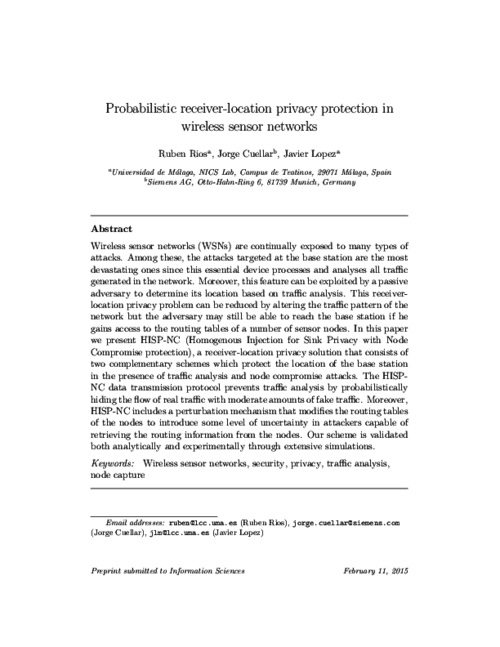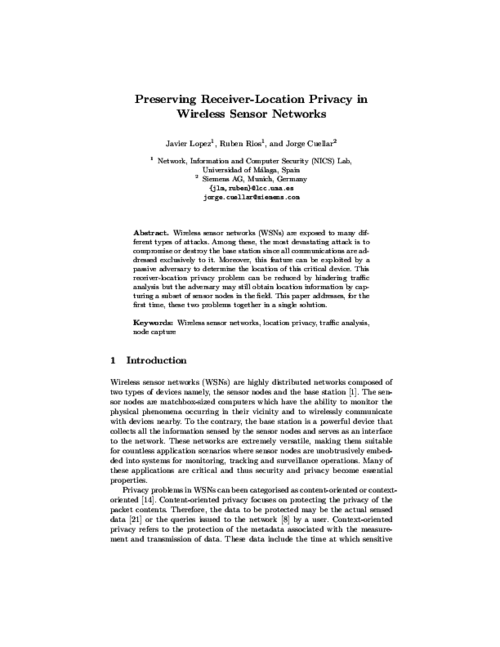 ] Type Year
] Type Year Information Sciences, vol. 321, Elsevier, pp. 205 - 223, 07/2015. DOI
Abstract
Wireless sensor networks (WSNs) are continually exposed to many types of attacks. Among these, the attacks targeted at the base station are the most devastating ones since this essential device processes and analyses all traffic generated in the network. Moreover, this feature can be exploited by a passive adversary to determine its location based on traffic analysis. This receiver-location privacy problem can be reduced by altering the traffic pattern of the network but the adversary may still be able to reach the base station if he gains access to the routing tables of a number of sensor nodes. In this paper we present HISP-NC (Homogenous Injection for Sink Privacy with Node Compromise protection), a receiver-location privacy solution that consists of two complementary schemes which protect the location of the base station in the presence of traffic analysis and node compromise attacks. The HISP-NC data transmission protocol prevents traffic analysis by probabilistically hiding the flow of real traffic with moderate amounts of fake traffic. Moreover, HISP-NC includes a perturbation mechanism that modifies the routing tables of the nodes to introduce some level of uncertainty in attackers capable of retrieving the routing information from the nodes. Our scheme is validated both analytically and experimentally through extensive simulations.

Information Security Practice and Experience (ISPEC 2014), vol. 8434, Springer, pp. 15-27, 05/2014. DOI
Abstract
Wireless sensor networks (WSNs) are exposed to many different types of attacks. Among these, the most devastating attack is to compromise or destroy the base station since all communications are addressed exclusively to it. Moreover, this feature can be exploited by a passive adversary to determine the location of this critical device. This receiver-location privacy problem can be reduced by hindering traffic analysis but the adversary may still obtain location information by capturing a subset of sensor nodes in the field. This paper addresses, for the first time, these two problems together in a single solution
